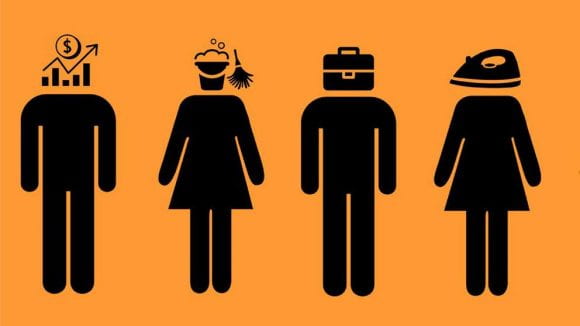
When we speak about race, you’ll find that most Americans agree that people of all races and ethnicities should be treated equally and with respect. However, personal experiences and news reports show us that race and ethnicity continues to be a problem and it affects how people are treated and how we all interact with each other on a daily basis. Most of us are aware that racial prejudice has a major impact on our lives and on our community. However, prejudice alone does not fully account for all racial dynamics, including occurrences where people of color may experience different treatment from white people. Therefore, we must realize the impact of racial anxiety (the discomfort people feel in anticipation of or during interracial interactions).
Most of us are concerned about how we may be perceived when we are communicating with others who come from different racial groups or ethnicities, and this can make us feel unsure about how to act. In the subject of race, this concern may be particularly severe, as people of color worry that they will fall victim to racial bias and white people worry that their words or actions will be misconstrued or assumed to be racist. This anxiety very often comes from lack of experience in interacting or being around other racial groups, this leads us to develop cultural stereotypes or distorted perceptions about what other groups are like.
Racial anxiety can be interpreted into behaviors that may seem to be bias, for example, the following are all examples of symptoms of racial anxiety:
- maintaining less eye contact
- keeping a physical distance
- smiling less
- using an aggressive or less friendly verbal tone, or even
- avoiding all interactions with people from other races altogether
All these behaviors can have major repercussions for perpetuating racial injustices, for example, a white teacher to appear to be engaging less with students color due to awkward body language, or by actually engaging less with students of color. Also, white employers conducting shorter interviews with non-white applicants, or patients of a certain race being less trusting of doctors from a different race. In addition, avoidance and distancing behaviors can also be due to racial prejudice, and people of different race may interpret these behaviors to be coming from racial prejudice, instead of interpreting them as a result of anxiety about interacting with other racial groups.
However, fortunately, racial anxiety is something that can be changed. This would require us to reach beyond our segregated friendship circles or communities, and develop meaningful relationships with people of other races, this has been proven by psychological research (Tropp, 2011). The more we do, the more we can:
- develop positive attitudes/empathy with people of other races
- gain confidence about navigating cross race interactions in the future, and
- alleviate our anxieties about cross race interactions
Positive experiences with people from other races can also help to lower the impact of negative cross racial encounters and help to make people more resilient when they engage in stressful interactions in the future. Most importantly, the advantage of cross race contact may not occur right away, one brief meeting between strangers or acquaintances can induce anxiety, especially for those with a brief history of interracial experiences. People usually become more comfortable with one another through repeated interactions across racial lines that grow closer over time. Even among people that show high levels of racial bias, physiological signs of stress can decrease through repeated interracial interactions, which can in turn cause future interracial experiences to be more positive in nature.
The circumstances in which people from different races come into contact matter. Reduced prejudice and racial anxiety happens most often when people from different races work together as equals towards a common goal, institutional support that endorses this kind of equal status also helps a great deal. Some examples of how these conditions can facilitate familiarity, positive changes and mutual respect in interracial attitudes are integrated sports teams and cooperative learning strategies. However, such favorable conditions can’t always be guaranteed across different situations. We may use these additional strategies to help create a common sense of identity and increase the potential for members from different groups to become friends, we can do this by establishing norms that promote interaction and empathy between groups and encourage respect for group differences.
However, given the fact that most of our communities and social circles remain segregated, it can be difficult to achieve interracial contact. Racial anxiety is usually a byproduct of racially similar environments, which render cross race interaction less likely and increase the changes that it will be less positive if it does occur. In such cases like these, indirect forms of contact, such as observing positive interracial interactions, or knowing that members of your racial group have friends and/or acquaintances in other racial groups, can help to reduce anxiety, promote more positive expectation for future interracial interactions, and create positive shifts in attitude.
The most important thing is to continue to reduce the impact of racial bias and prejudice, and address the structural and institutional conditions that perpetuate our country’s history of racial discrimination. While engaging in these efforts, we must also realize that addressing our racial anxiety is critical if we hope to achieve long-term goals in removing racialized barriers to belonging, opportunity, and inclusion.
We can use intergroup contact techniques to reduce racial anxiety and promote positive interracial relationships as an important complement to other anti-discrimination efforts. We can all benefit from moving past the confines of our group boundaries and into a broader more open circle of friendships, relationships, and colleagues.
References:
Pettigrew, Thomas & Tropp, L.R.. (2012). When groups meet: The dynamics of intergroup contact. When Groups Meet: The Dynamics of Intergroup Contact. Retrieved July 27, 2020, from 1-310. 10.4324/9780203826461.
Tropp, L. R., & Mallett, R. K. (Eds.). (2011). Moving beyond prejudice reduction: Pathways to positive intergroup relations. American Psychological Association. Retrieved July 27, 2020, from https://doi.org/10.1037/12319-000




